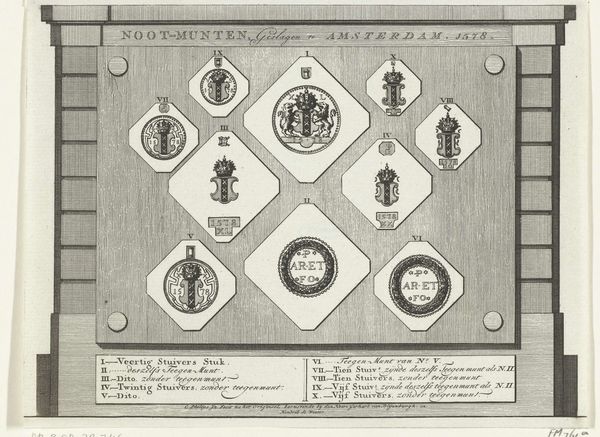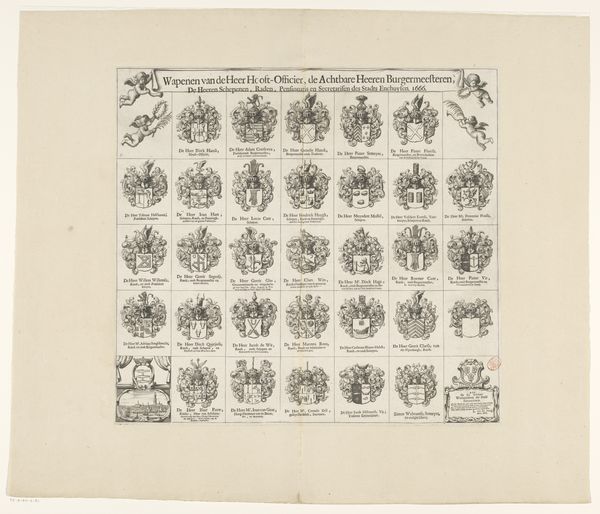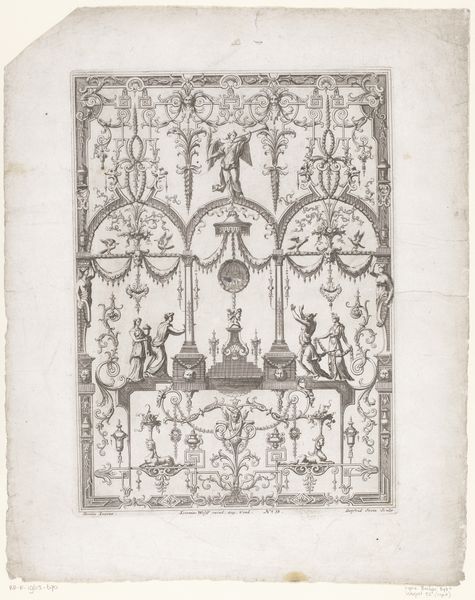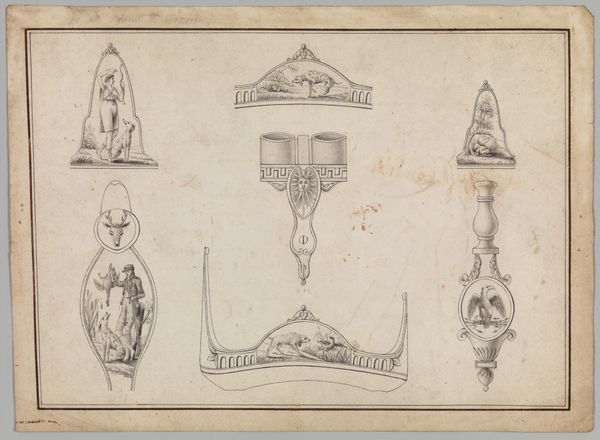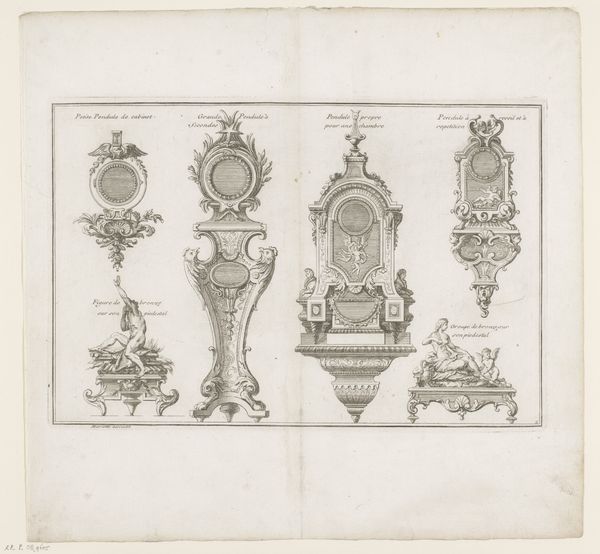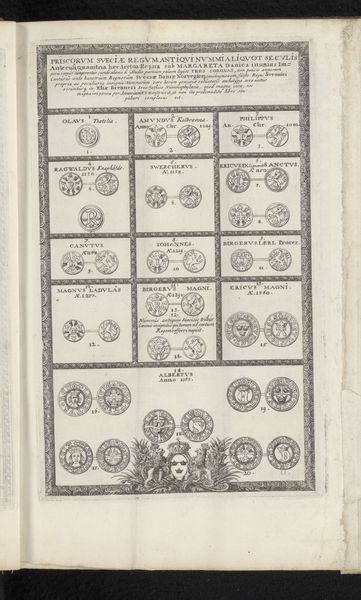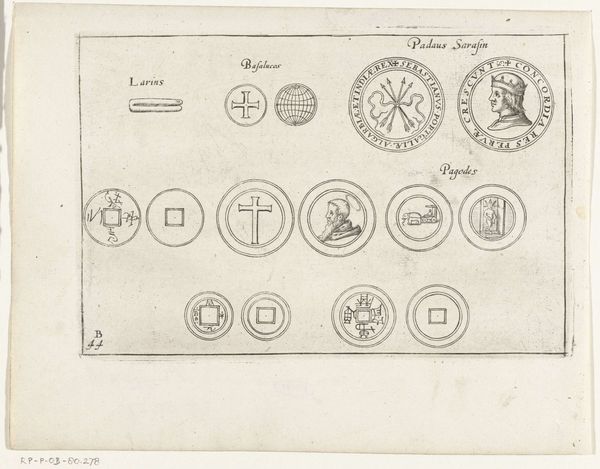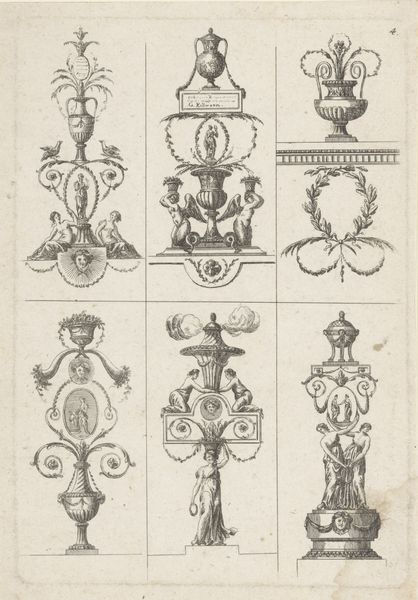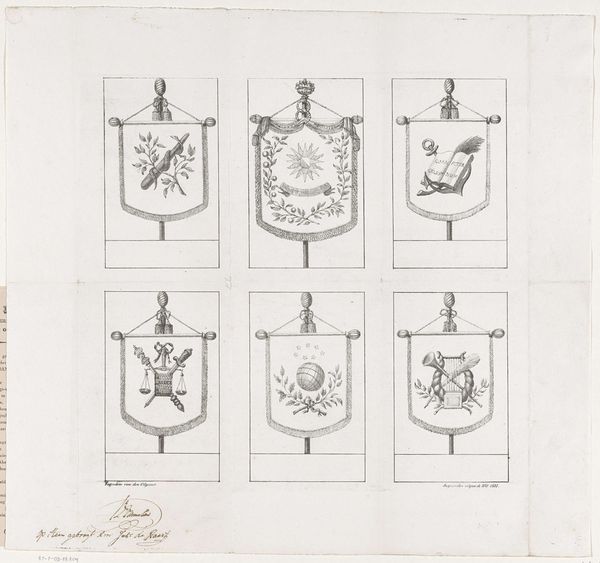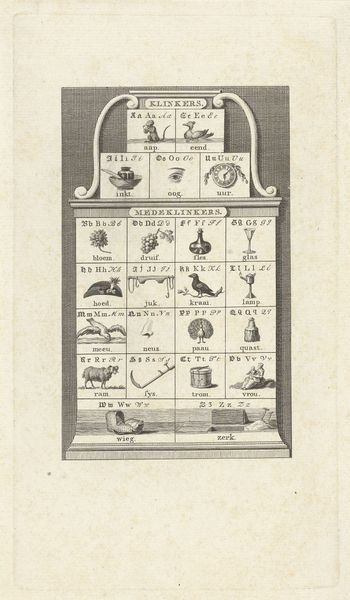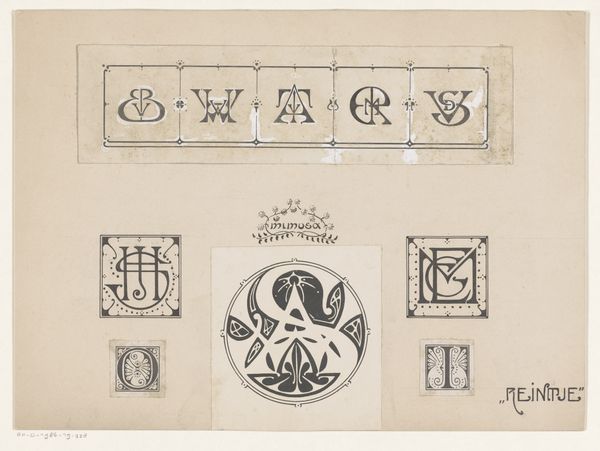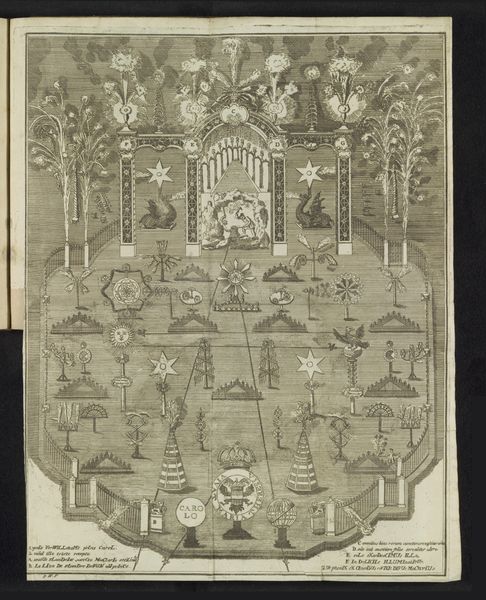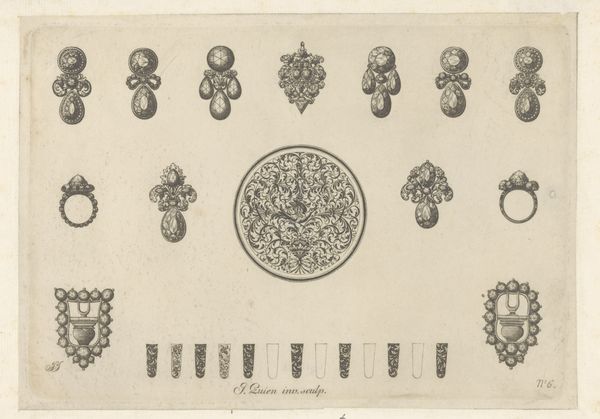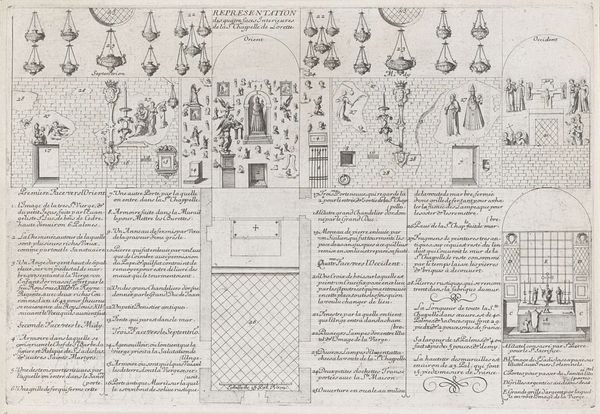
drawing, ink, pen
#
drawing
#
baroque
#
ink
#
pen work
#
pen
Dimensions: 226 mm (height) x 229 mm (width) (monteringsmaal), 203 mm (height) x 205 mm (width) (bladmaal)
Editor: This work is called "Brikker til et skakspil", or "Pieces for a Chess Game" in English. It was created between 1743 and 1751 by Marcus Tuscher, using pen and ink. It looks like a technical drawing of chess pieces, almost architectural in its precision. What strikes you about the composition of this work? Curator: Note first the grid-like structure. Observe how Tuscher uses the grid not merely as a means of organization, but as a way to highlight the geometric properties of each piece. Each square contains a single form and the entire plane functions almost like a mathematical equation. Semiotically, the pen work seems highly controlled. Notice, too, how the diagrammatic rendering seems devoid of gestural markings or any reference to external aesthetics. It invites us to focus on the relationships of line, form, and textual annotation to denote rank and material. Editor: I hadn't considered how mathematical it appears! Is this attention to geometry a feature of Baroque art? Curator: While Baroque art is often associated with dynamism, ornamentation, and intense emotion, this drawing reflects the era’s interest in order and scientific understanding. This graphic structure of the chess pieces also plays into the tradition of philosophical inquiry. Editor: I can definitely see the philosophical side now! I was only focusing on the subject, chess. Thank you for opening my eyes to the way line and geometry communicate meaning. Curator: Precisely. Recognizing this dimension of geometry reveals other dimensions for aesthetic contemplation and potential analysis of content.
Comments
No comments
Be the first to comment and join the conversation on the ultimate creative platform.
